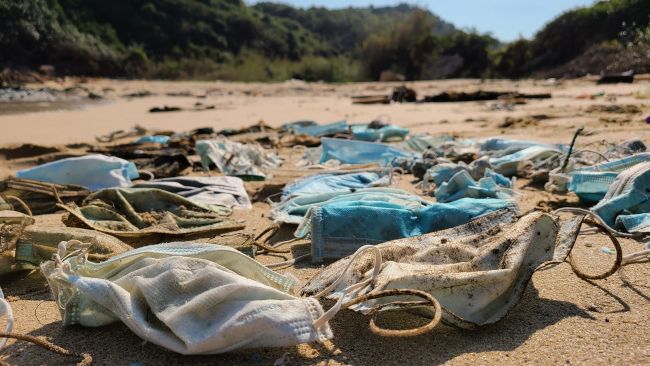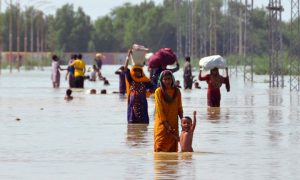Recycling rates are now inching back to pre-COVID levels in developed economies, said James Michelsen, a solid-waste expert.
Across Brazil, recycling plants stopped running for months. In Uganda, a junkyard is short on reusable plastics. And in Indonesia’s capital, disposable gloves and face shields are piling up at a river mouth.
Surging consumption of plastics and packaging during the pandemic has produced mountains of waste. But because fears of COVID-19 have led to work stoppages at recycling facilities, some reusable material has been junked or burned instead.
At the same time, high volumes of personal protective equipment, or PPE, have been misclassified as hazardous, solid-waste experts say. That material often is not allowed into the normal trash, so a lot of it is dumped in burn pits or as litter.
Experts say a problem in both cases is that an early fear — that the coronavirus could spread easily through surfaces — has created a hard-to-shake stigma around handling perfectly safe trash. Many scientists and government agencies have since found that the fear of surface transmission was wildly overblown. But old habits die hard, especially in countries where waste disposal guidelines have not been updated and officials are still preoccupied with fighting fresh outbreaks.
Recycling rates dropped sharply around the world last year, in part because demand from manufacturers fell. In many countries where the recycling industry is still driven by hand sorting, rather than machines, in-person work was suspended out of virus-related fears. A study found that during the suspension period, at least 16,000 fewer tons of recyclable material than usual were in circulation, representing an economic loss of about $1.2 million per month for waste-picker associations.
Recycling rates are now inching back to pre-COVID levels in developed economies, said James Michelsen, a solid-waste expert.
But in countries where recycling is driven by informal collectors, he added, lockdowns and outbreaks are creating major disruptions.
Also, most PPE is not hazardous, but many countries still classify it as such, said Michelsen. That means used gloves and masks are often lumped together with truly hazardous medical waste.
An emerging concern is that, as the flood of material creates new pressures on local authorities, syringes and other truly hazardous medical waste may end up in the wrong places. And because syringes and vaccine vials are a valuable commodity on the black market, criminal gangs have an incentive to steal vaccination gear and illegally resell it into the health care system.
By Mike Ivesc.
2021 The New York Times Company



































